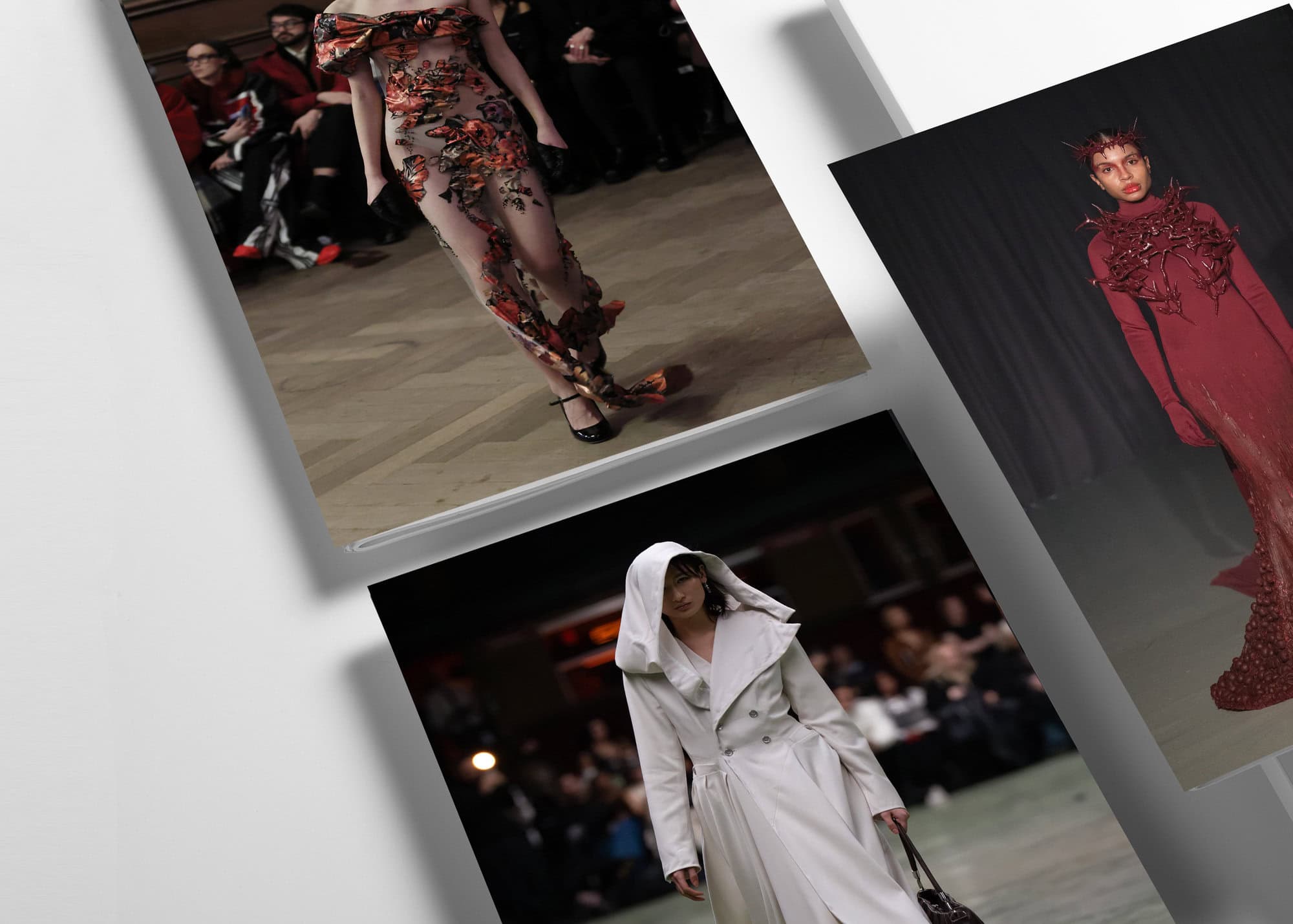Berlin Is Cooking
By Dao Tran
Since Fashion Council Germany (FCG) took over the stewardship of Berlin Fashion Week (BFW) when Mercedes Benz withdrew funding in 2022, they have been honing its format and identity, owning their strengths and shining in showcasing new creative talents in Berlin Contemporary under the knowing curatorial eye of Christiane Arp. Last season, they introduced Copenhagen Fashion Week’s Sustainability Requirements and added their own Code of Conduct, emphasizing Diversity, Equity, Inclusion, and Belonging. This is more important than ever, what with the rise of the far right in Germany and elsewhere, and Trump shutting down DEI initiatives and specifying there are only two genders. Diversity and inclusivity have been the reason why creatives around the world have flocked to Berlin, for the freedom to live out their authentic identities, find expression, acceptance, and community.
In her opening speech, Franziska Giffey, the Berlin State Senator for Economy, Energy and Enterprise, which provides generous funding for BFW and the FCG, emphasized the three I’s, as she put it, that characterize Berlin Fashion Week: inclusive, innovative, and international. You will find the most diverse casting on the runways here because Berlin brands have historically put their community on the catwalk. This is partially spurred by (economic) necessity, but also deeply part of their ethos. And you know what they say about necessity being the mother of invention –
Berlin is a hotbed of innovation, with the young generation of designers developing sustainable alternatives such as red wine leather and seaweed fur, 3D printing couture out of recycled materials, or fashioning looks for Lady Gaga and FKA Twigs out of discarded car parts.
Berlin Fashion Week is growing in global relevance, attracting more international press, buyers, industry experts, and influencers each season. The FCG has done a great job of outreach to other fashion capitals and councils to share learnings, with Pascal Morand (FHCM), Carlo Capasa (Camera Nazionale della Moda), and Cecilie Thorsmark (Copenhagen Fashion Week), among others, speaking in METAMORPHOSIS, an inspiring series of talks on sustainability, technology, and the future of fashion.
Berlin brands with promising futures include SF1OG and Haderlump, highlights on the schedule with a strong brand identity who have exhibited steady growth and maturity. They both source from vintage, deadstock, or recycled fabrics, honor traditional handicraft and artisanal methods, produce on demand, and give historical influences a decidedly modern glowup. SF1OG took inspiration from music scenes and the concept of uniforms for this collection, addressing the intersection between the expression of individuality and belonging. This is exemplified in the iconic Chuck Taylor, whose enduring appeal rests on each individual’s relationship to and personal take on it; their custom collaboration with Converse this season involved homegrown crystals (!) or spikes. Add shutter shades, modern takes on Curt Cobain cardigans, John Lennon jackets, and rock star pants for the new indie sleaze uniform.
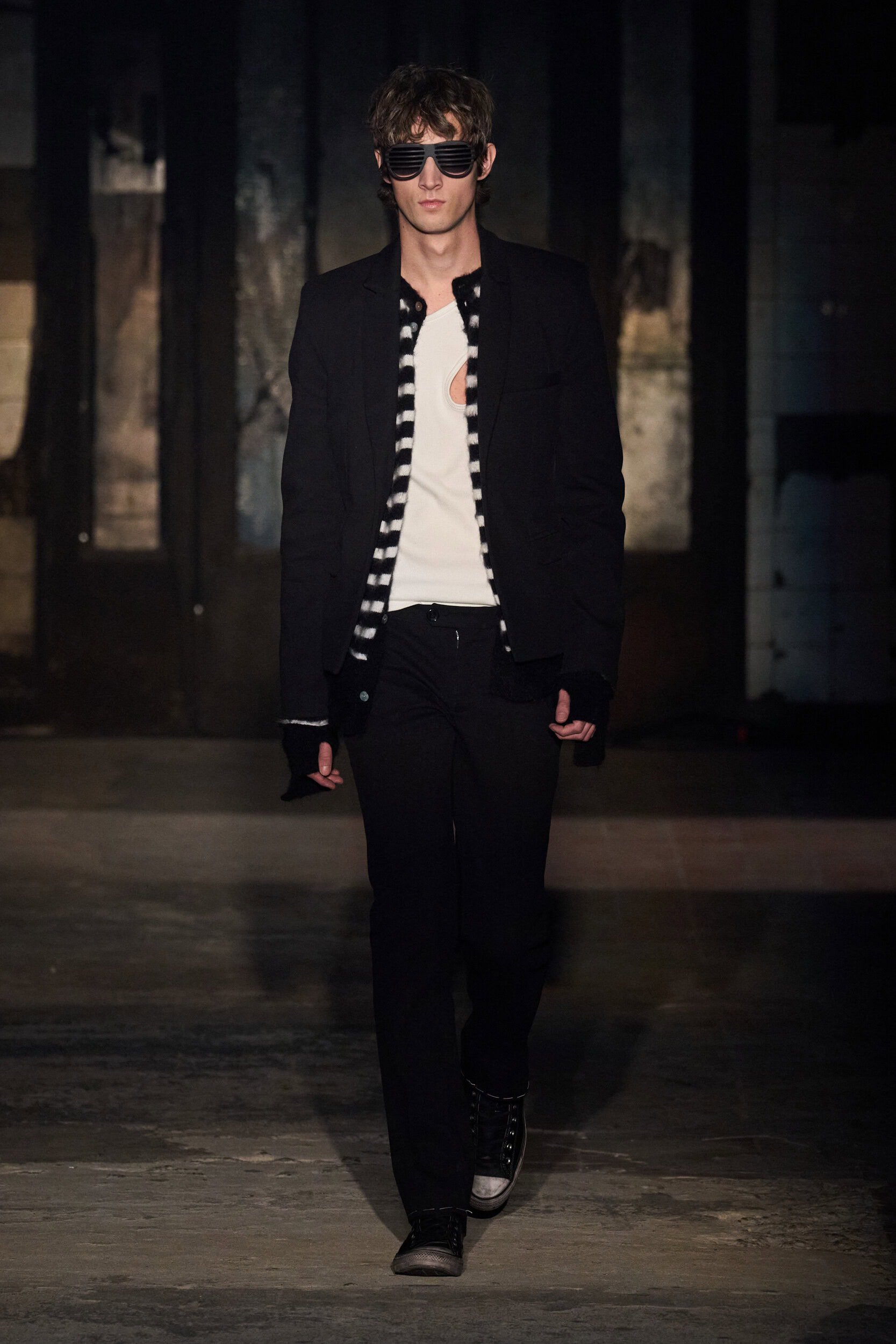
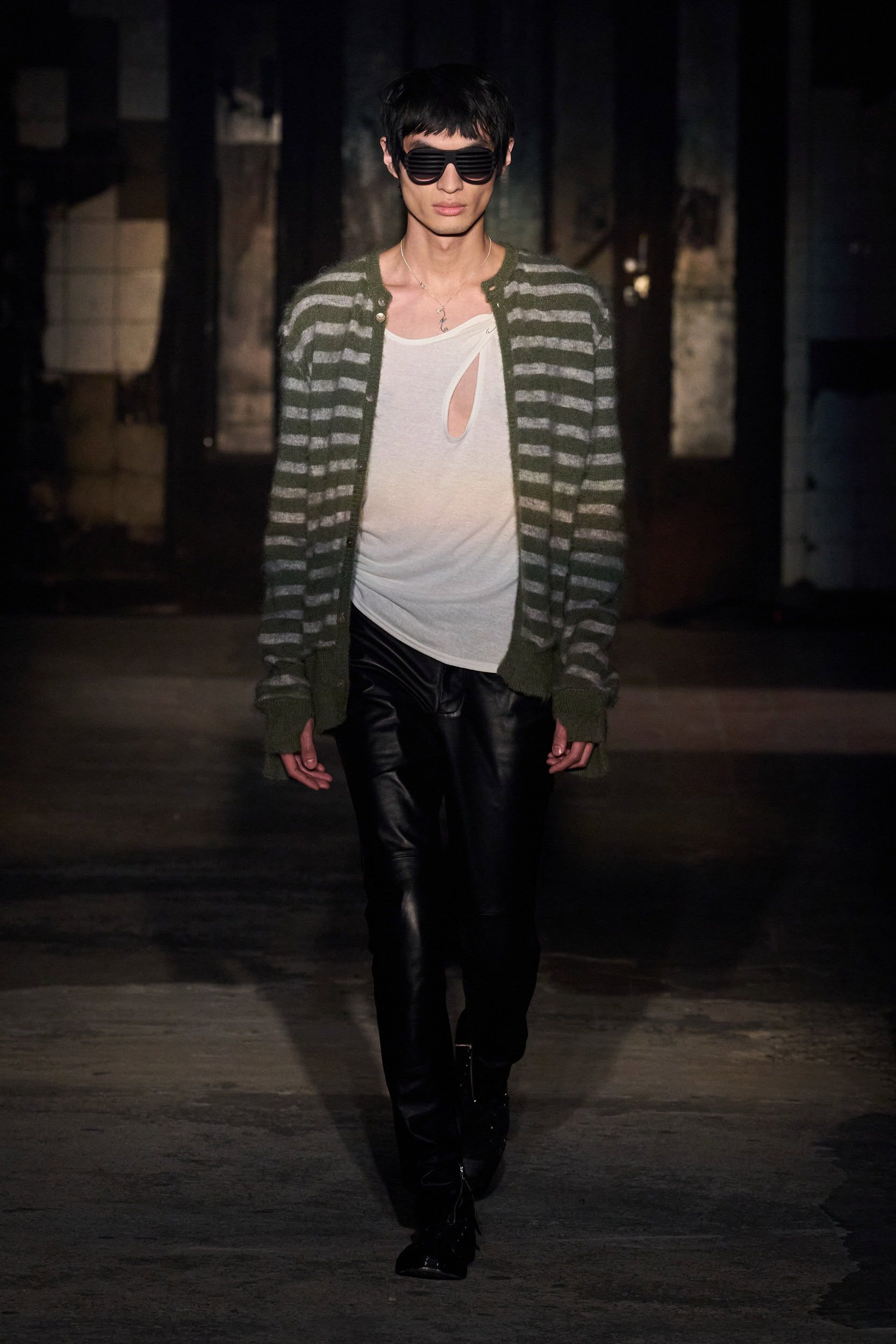
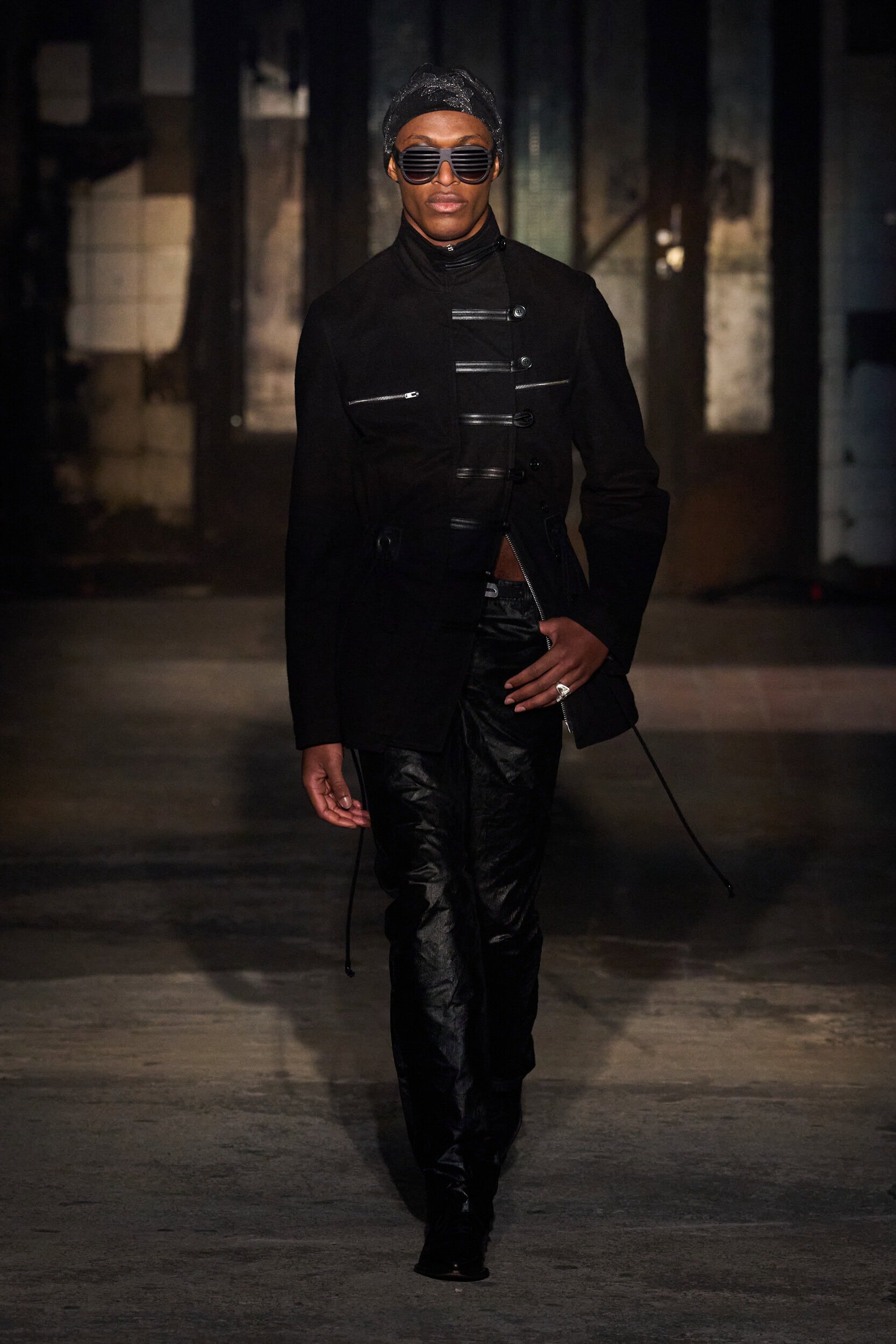
Haderlump goes so big each time with their holistic concept, it’s genius storytelling and world building. For the show titled “SOLIVAGANT,” meaning traveling alone, 500 guests were transported to and from the show on a historic train to a depot, complete with a staged station platform. The invitation was the train ticket and we were given a beautiful “travel manual” booklet relating the touching anecdote that was the point of departure for the collection. The collection draws inspiration from the 1950s and the spirit of adventure and discovery associated with train travel in those days. It tells the story of the journeys and impressions and connections that are made in that third place, with the interplay of movement and light and structures in the station reflected in the color palette and flow and silhouettes of the characters in the show. Through skilled tailoring and craftsmanship, their signature silhouettes and sweeping volumes lend drama, gravitas, mystery, and authority to the modern sojourner. This brand is going to go far. Their productions have been consistently tight and bombastic, with last season inspired by Amelia Earhart set in a former airport hangar, and recreating their atelier for a previous collection highlighting the creative team and handicraft behind the clothes. It shows a strong point of view and thorough ideation, rich creative network and exchange, professional execution, and long term vision.
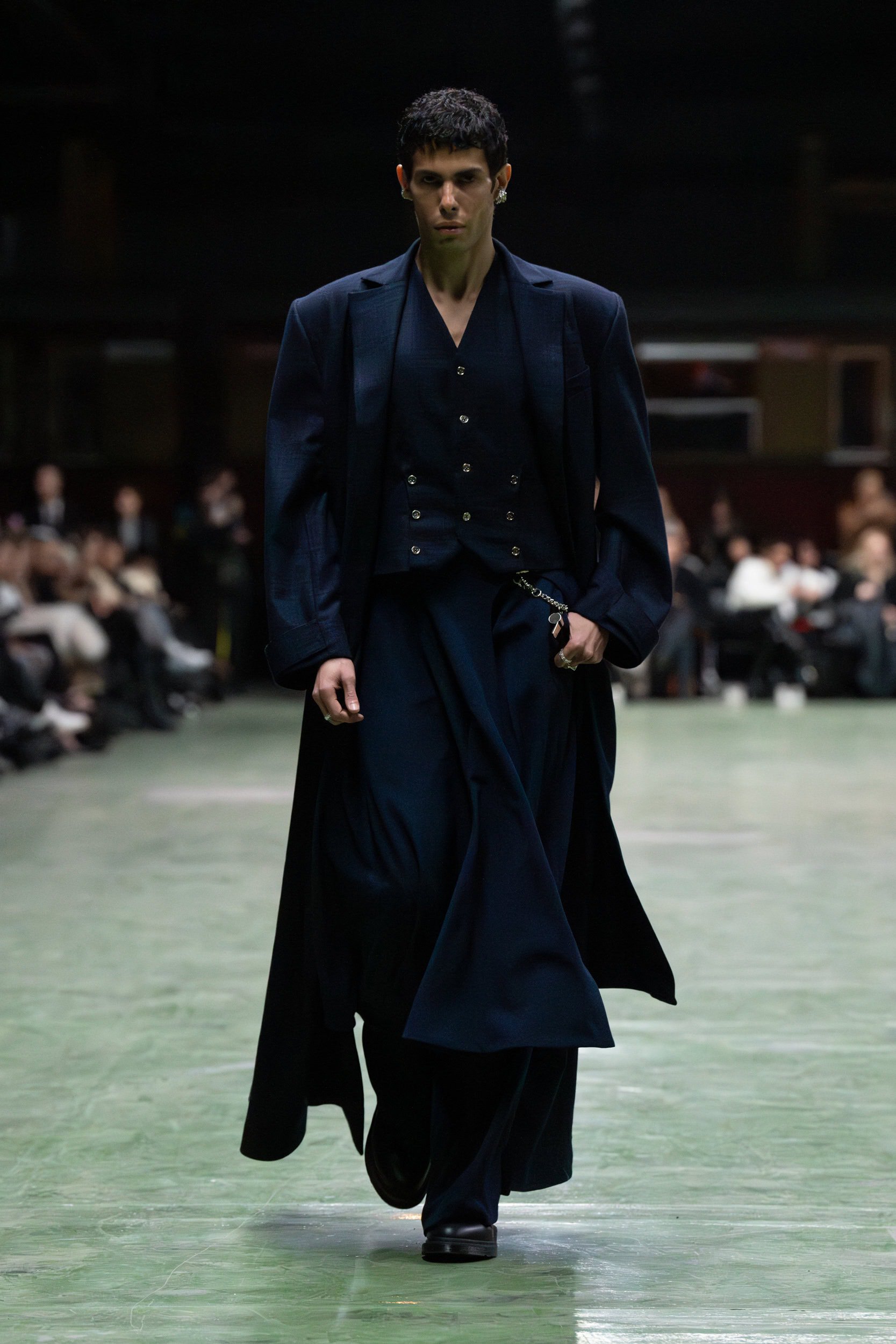
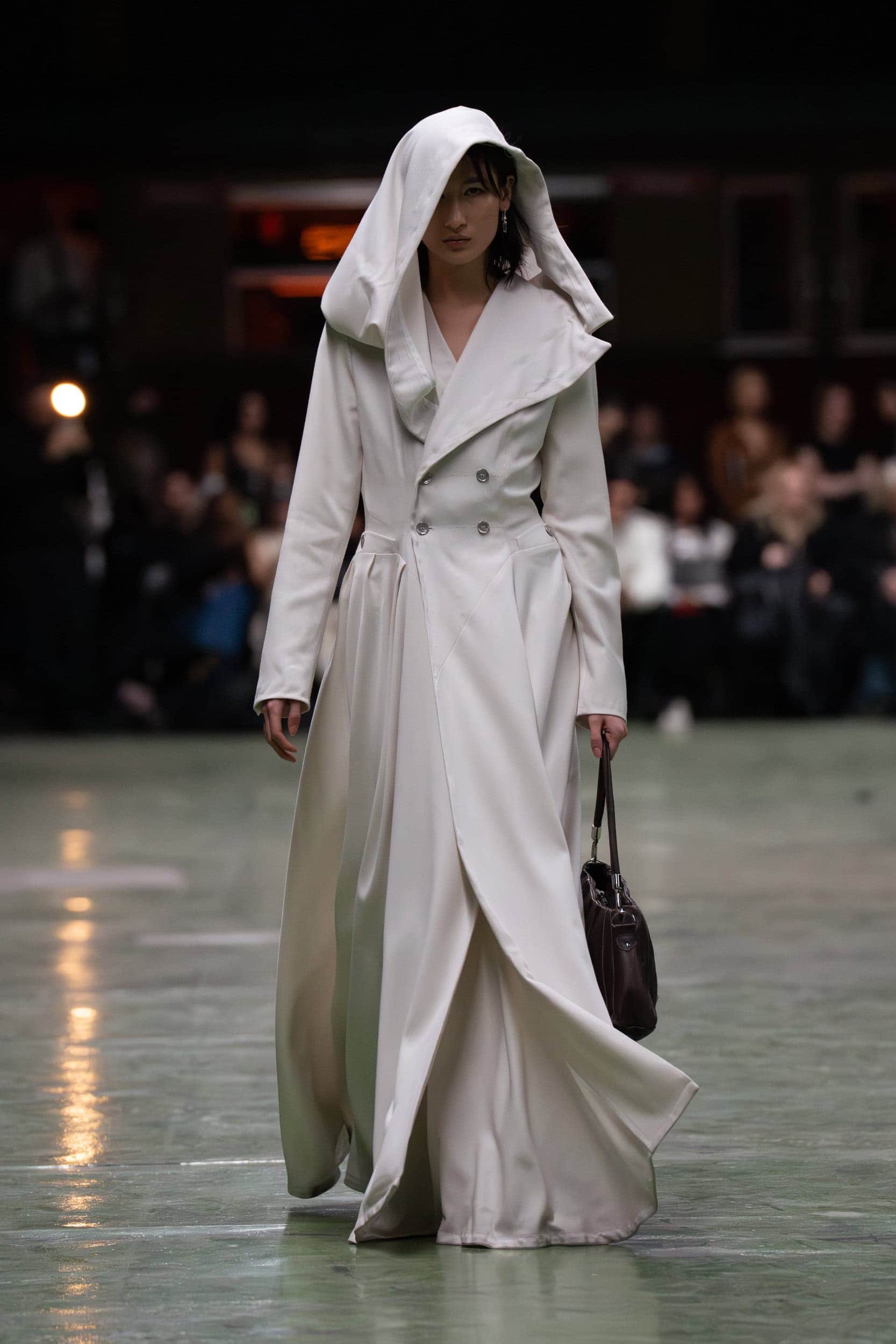
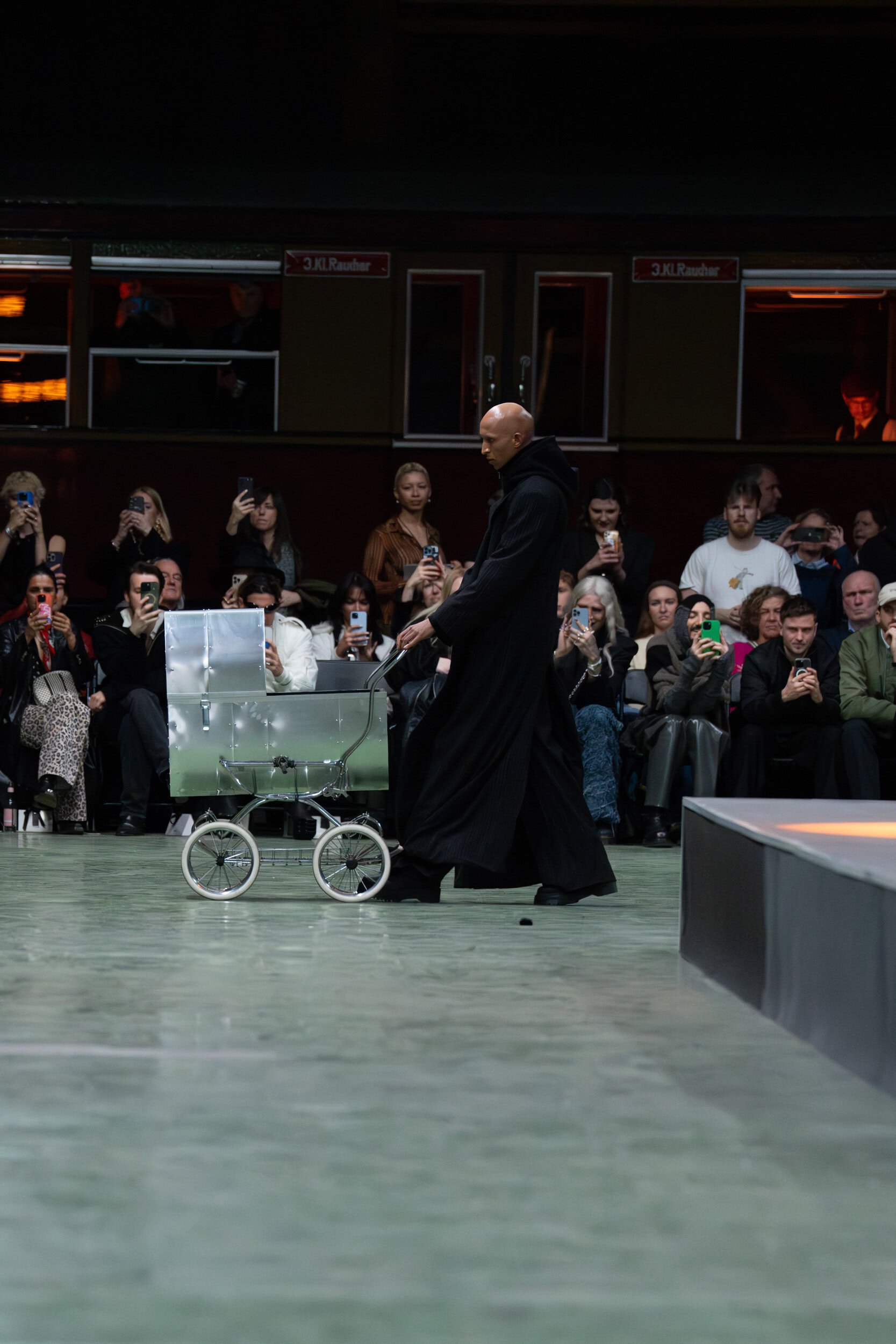
Speaking of artisanal, Lou de Bètoly’s unique works of wearable art are always a marvel. Besides her signature crocheting and knitting, she uses intricate pleating and draping to create sculptural volumes that nevertheless have a fluidity, and architects flirty tops and dresses from vintage undergarments. Hers is a slow fashion approach – transforming pre-loved items through meticulous handicraft is a process interwoven with intuition and the fabric of life. She collected the broken bike reflectors that she used in a halter top and skirt from the streets of Berlin and the chicken feathers embellishing the knitwear from her parents’ garden. The interplay between fragility and opulence of decomposing lace and crystalline embellishments, or mohair woven through transparent nylon knitwear, was perfectly mirrored in the iconic Spiegelsaal (hall of mirrors) of Clärchens Ballhaus.



On the other hand of the spectrum and probably more what people expect from Berlin are Maximilian Gedra and Marlon Ferry. Everyone has seen Maximilian Gedra latest by now, as Lady Gaga wore a custom red stalactite hat by him in Abracadabra, her new anthem that has taken the world by storm. He shouts her out “for inspiring a world where fashion is power, identity is limitless, and rebellion is an art form.” This design approach offers “armor
for the modern leader” and gives new meaning to the term power dressing. In this third season, themed “The Office – Dystopian Hysteria,” businesswear gets the Maximilian Gedra treatment – think maximalist shoulders, brutalist silhouettes, and unconventional materials. There was a coat made of ties, a dress made of 26,000 safety pins, and another made of no idea how many buttons. These pieces are made for big personalities and performers, they are meant for the red carpet and the stage.
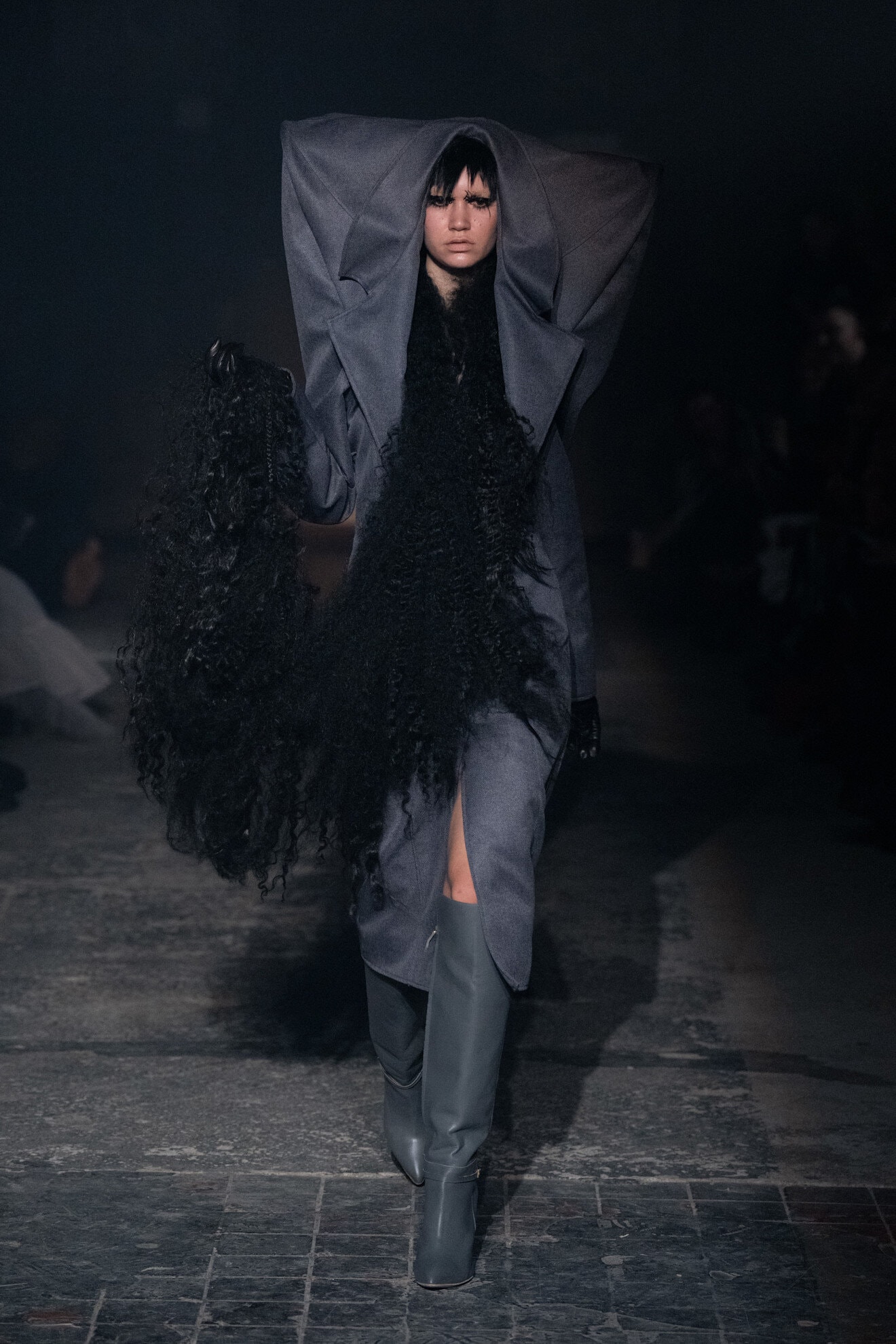
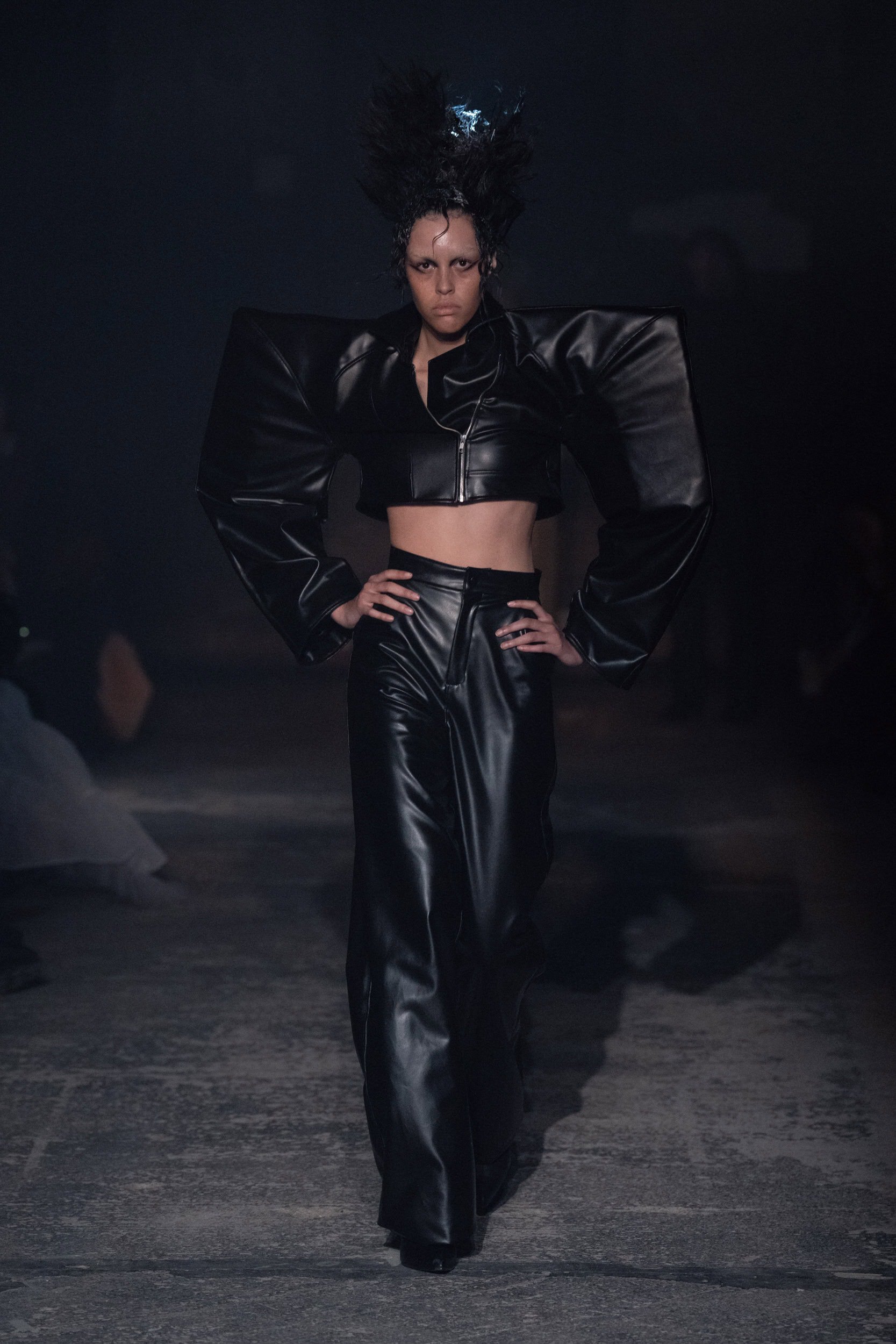
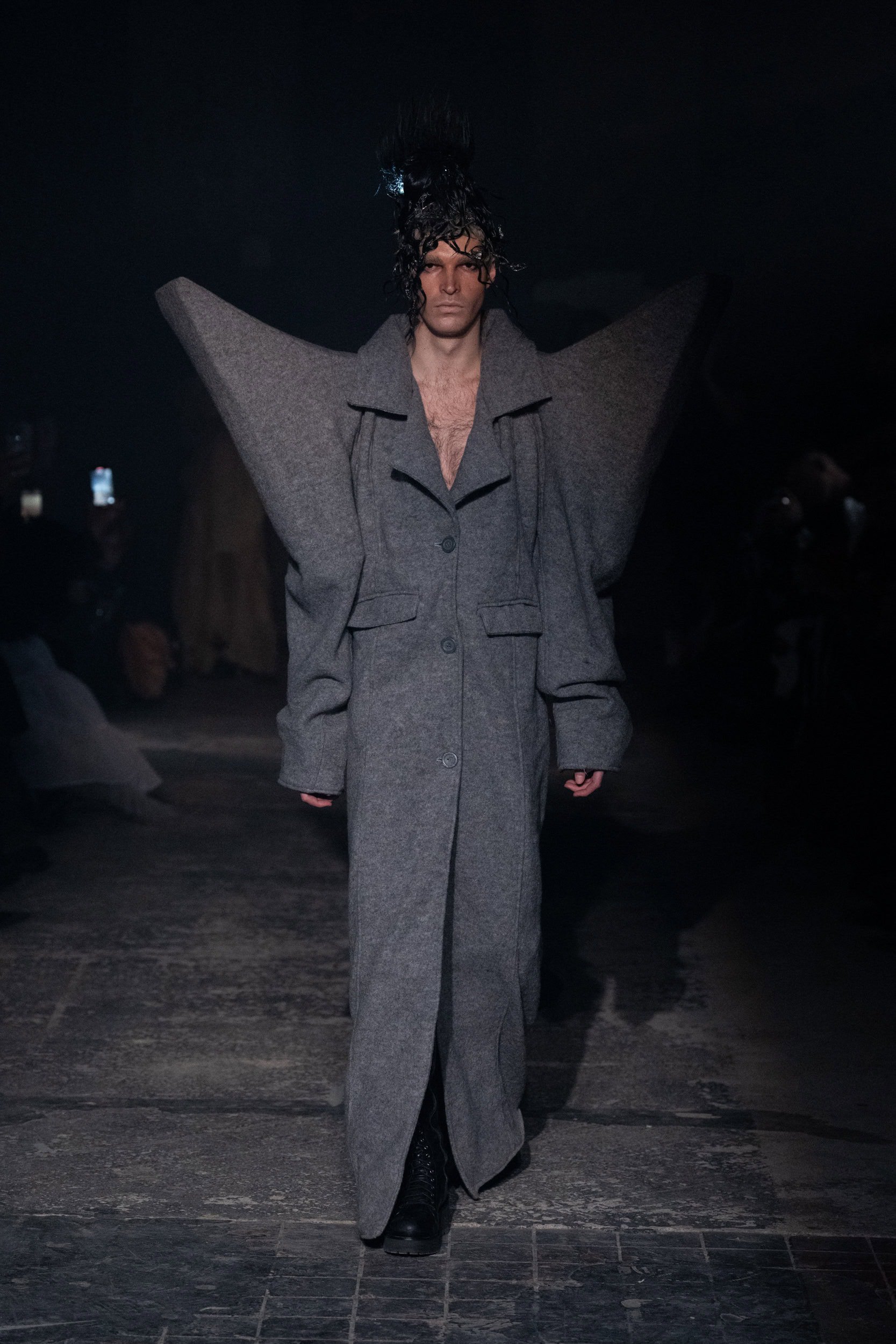
The same could be said for Marlon Ferry, who is also on his third season. He seeks to redefine the boundaries of couture by merging traditional craftsmanship with experimental materials such as latex and cutting-edge technology, including virtual fashion, VR, and 3D printing. He learned from the best – Central Saint Martins and the atelier of Iris van Herpen. For him, the juxtaposition of flowing fabrics like silk or chiffon with 3D printed fantasy elements is not only an exploration of the relationship between humans and technology, but also an expression of resilience and renewal. The sculptural elements evoke a kind of protective or talismanic structure. In a world of trauma, conflict, and division, he invokes the human spirit and our potential for healing and unity.
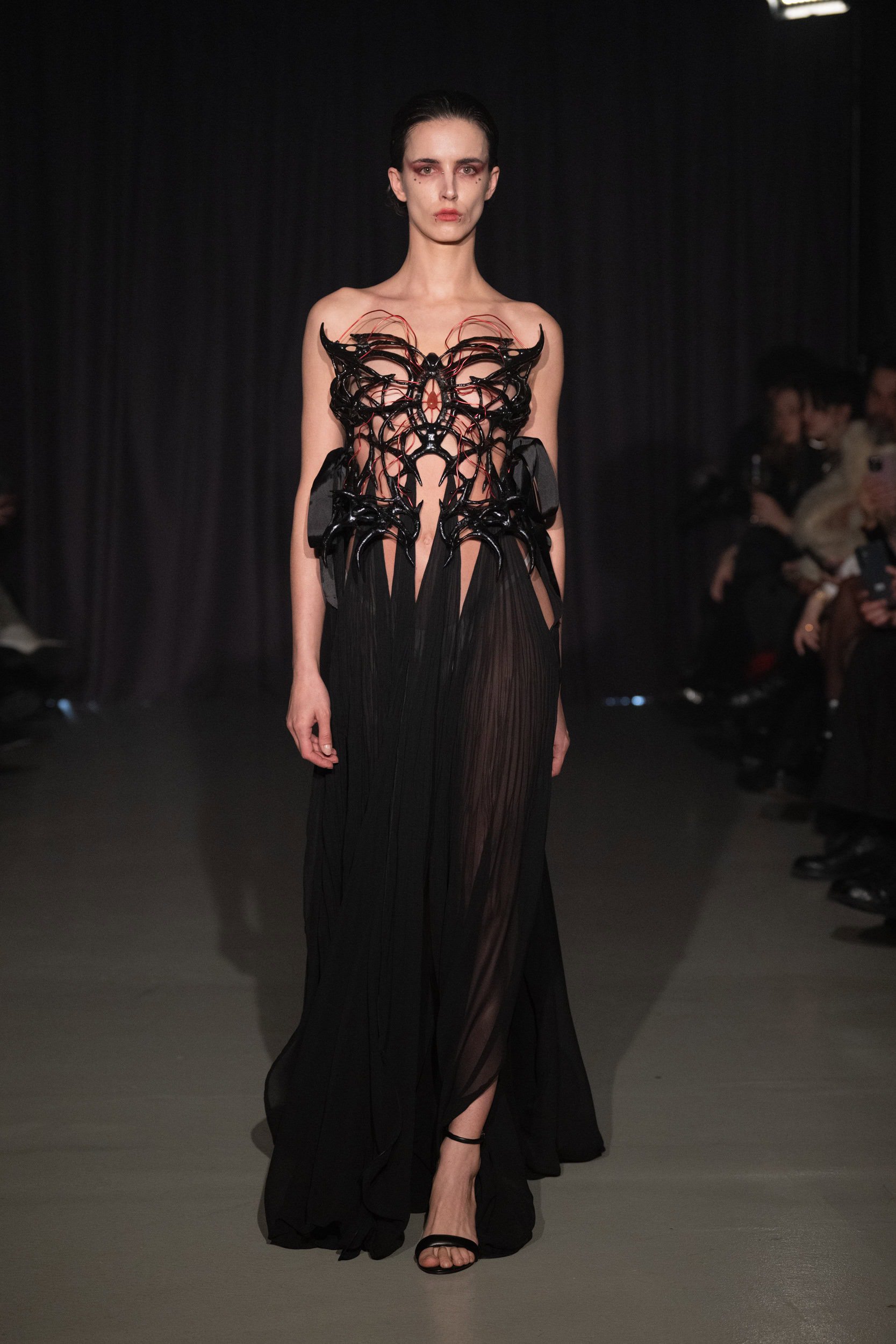
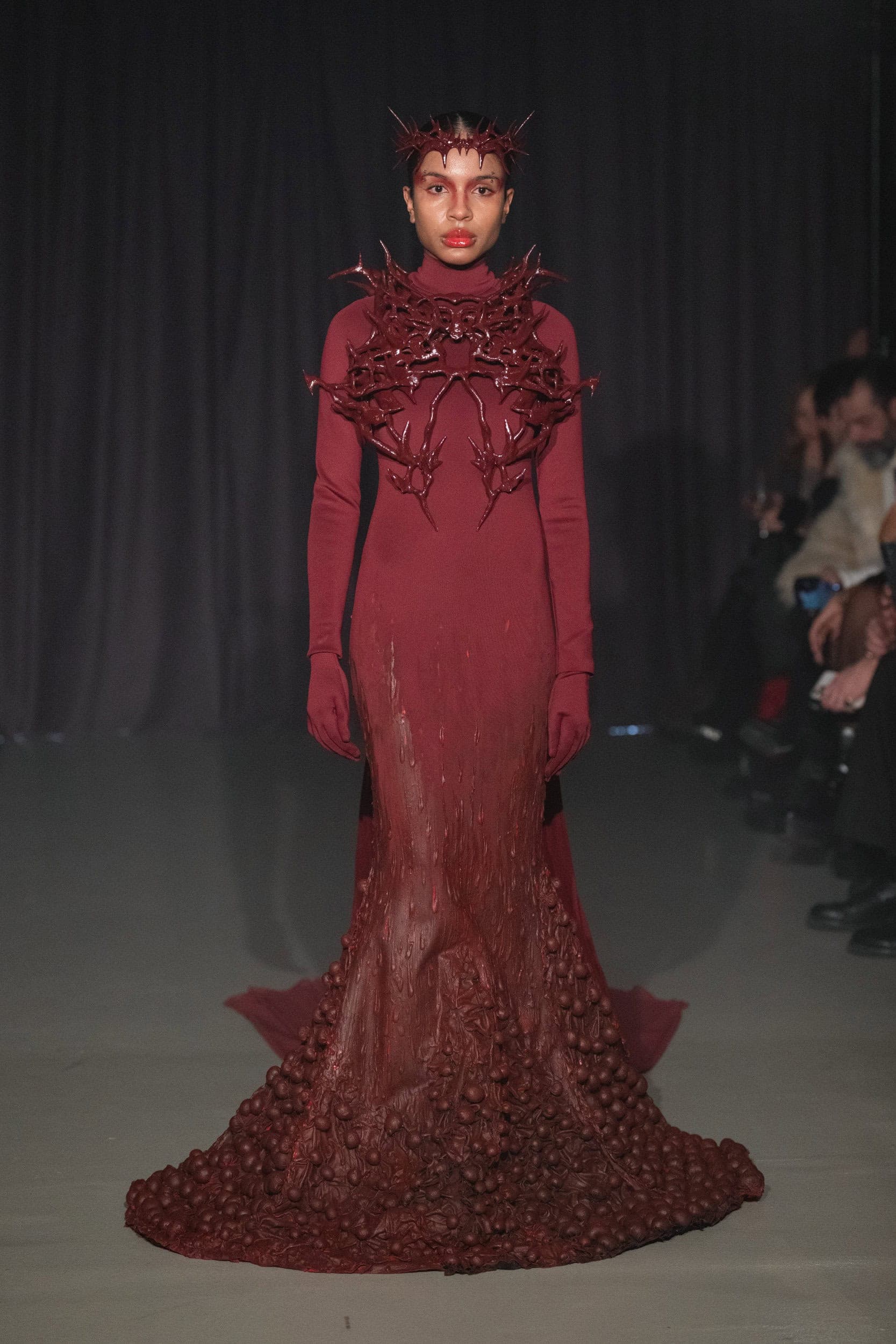
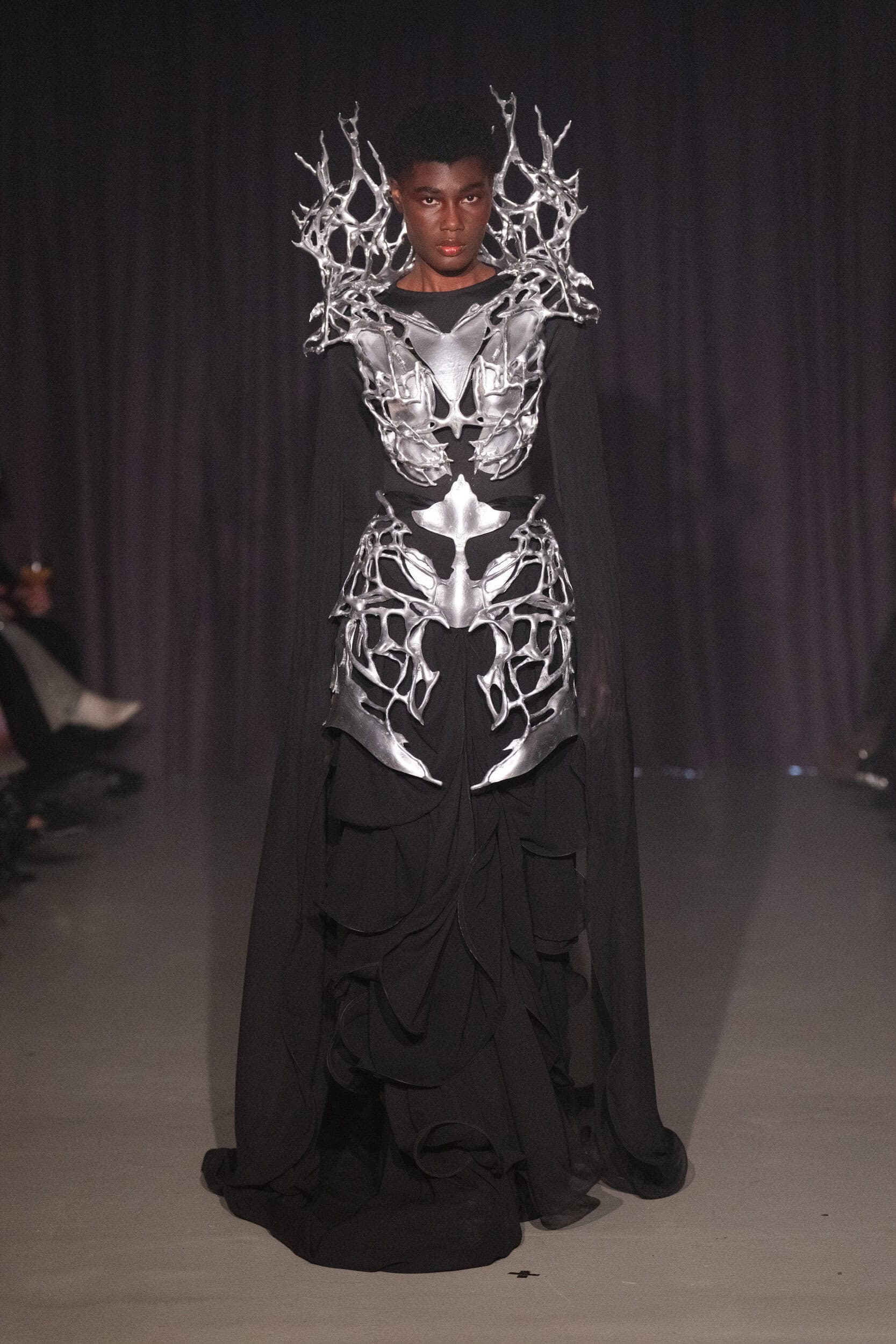
In these troubling times, Benjamin Huseby and Serhat Isik of GmbH slowed down and looked inward to find comfort and clarity. Their 10-year anniversary collection titled “From Another Reality” was an introspection on how they got here, looking at their heritage, and staying true to their identity. The impeccable tailoring, dignified silhouettes, and Turkish or Pakistani touches are an homage to their fathers, who came to Germany and Norway as guest workers, and the dignity and community with which they navigated that experience. Returning to their roots meant presenting in their hometown again as part of Reference Studio’s Intervention program. It also meant no womenswear this season, but that’s okay since this collection was such a graceful, elegant articulation of how to inhabit this our world of parallel realities.
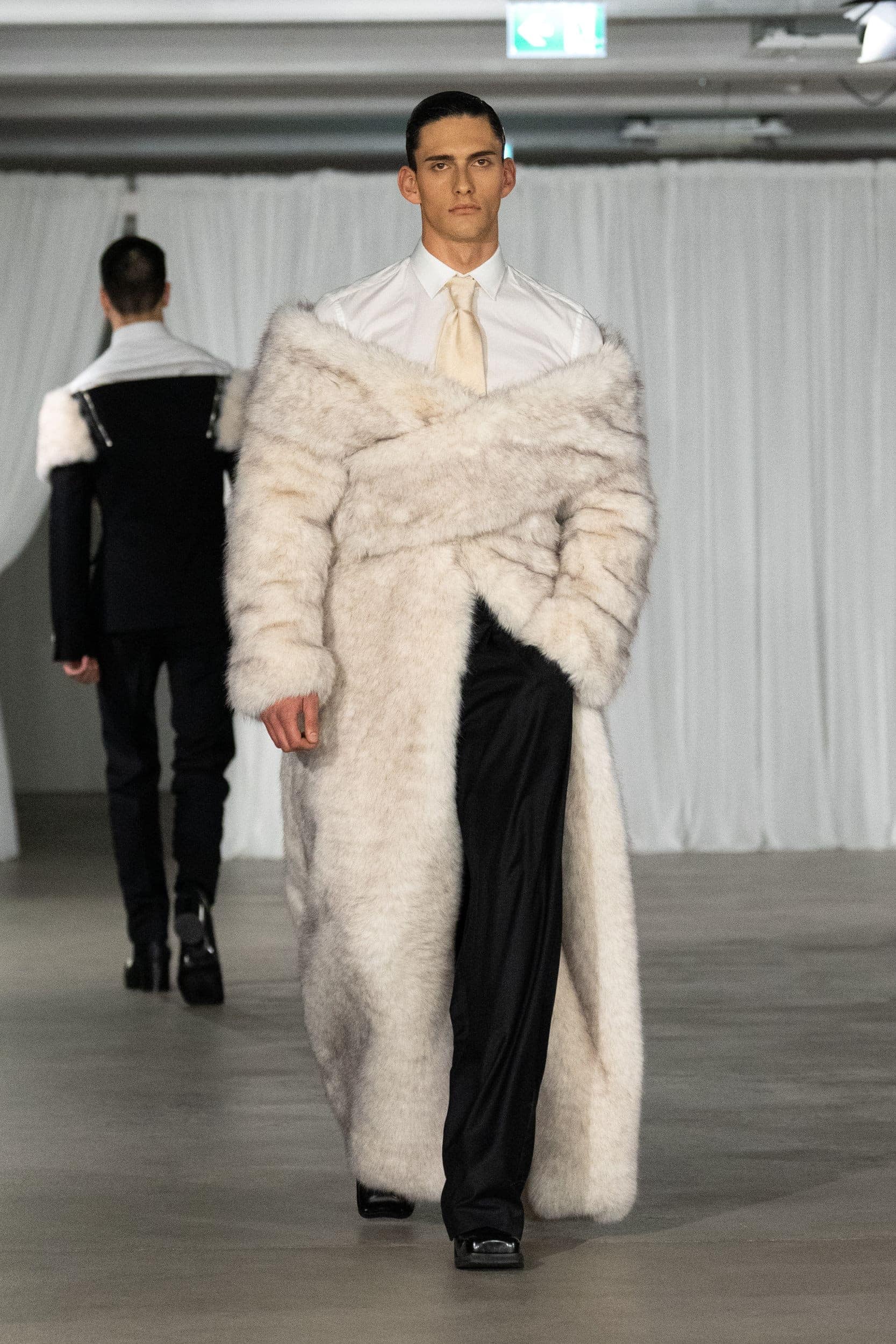
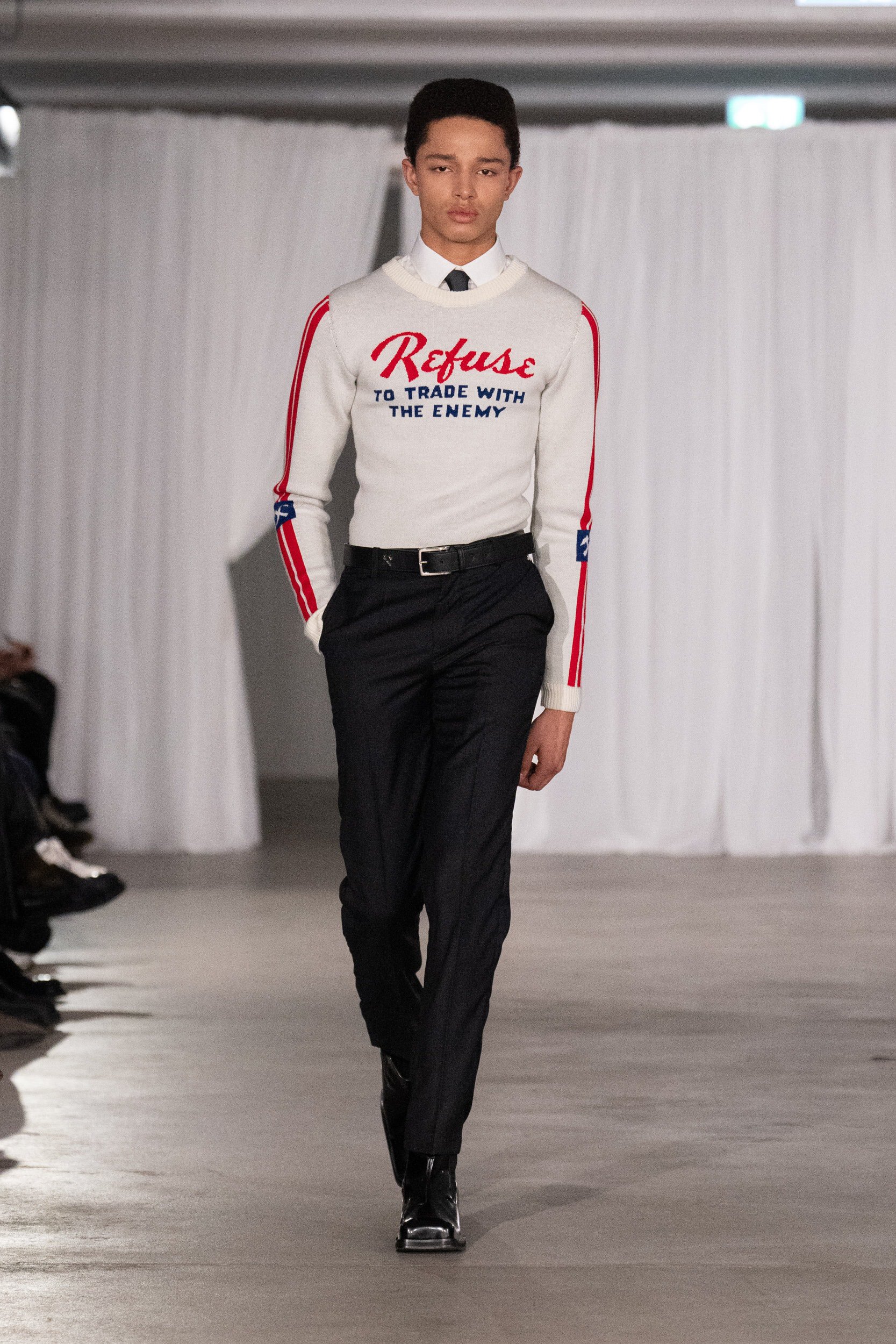
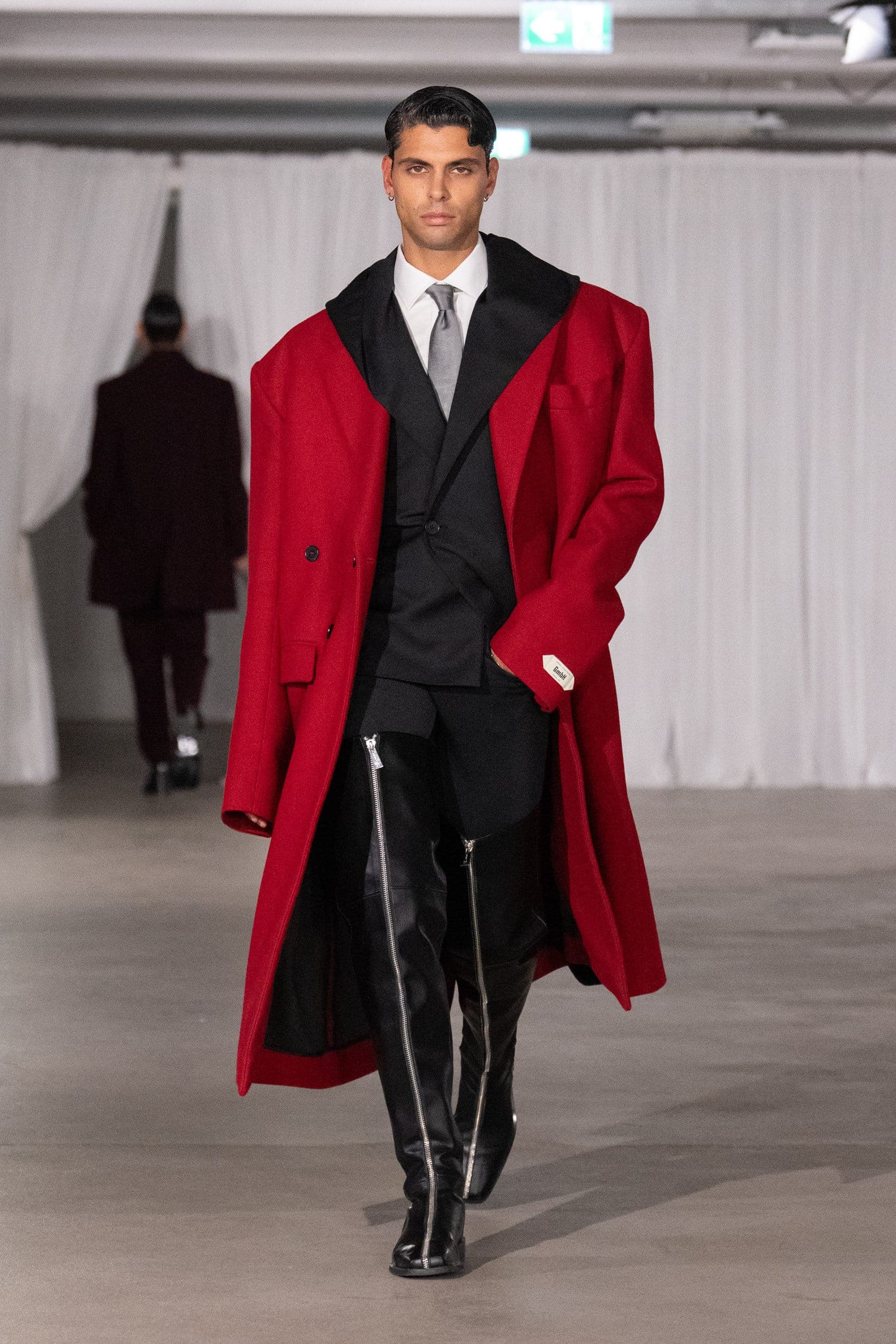
William Fan’s parents came from China and he also integrates aspects of his Chinese heritage into his work for a nevertheless international sensibility. Titled “Alter Ego” and inspired by the multifaceted characters in the Peking Opera, the collection explores the concept of identity and the roles we play, and how that manifests in what we express with fashion. His dualities are reflected in his work – East and West, tailored but legère, idiosyncratic but elegant, impeccable but with a personal twist. His 10-year anniversary show befittingly took place in the Berlin Philharmonic, with the fabulous Bruce Darnell leading the finale, and his six hundred well-suited guests were treated to a piano duo concert afterwards.

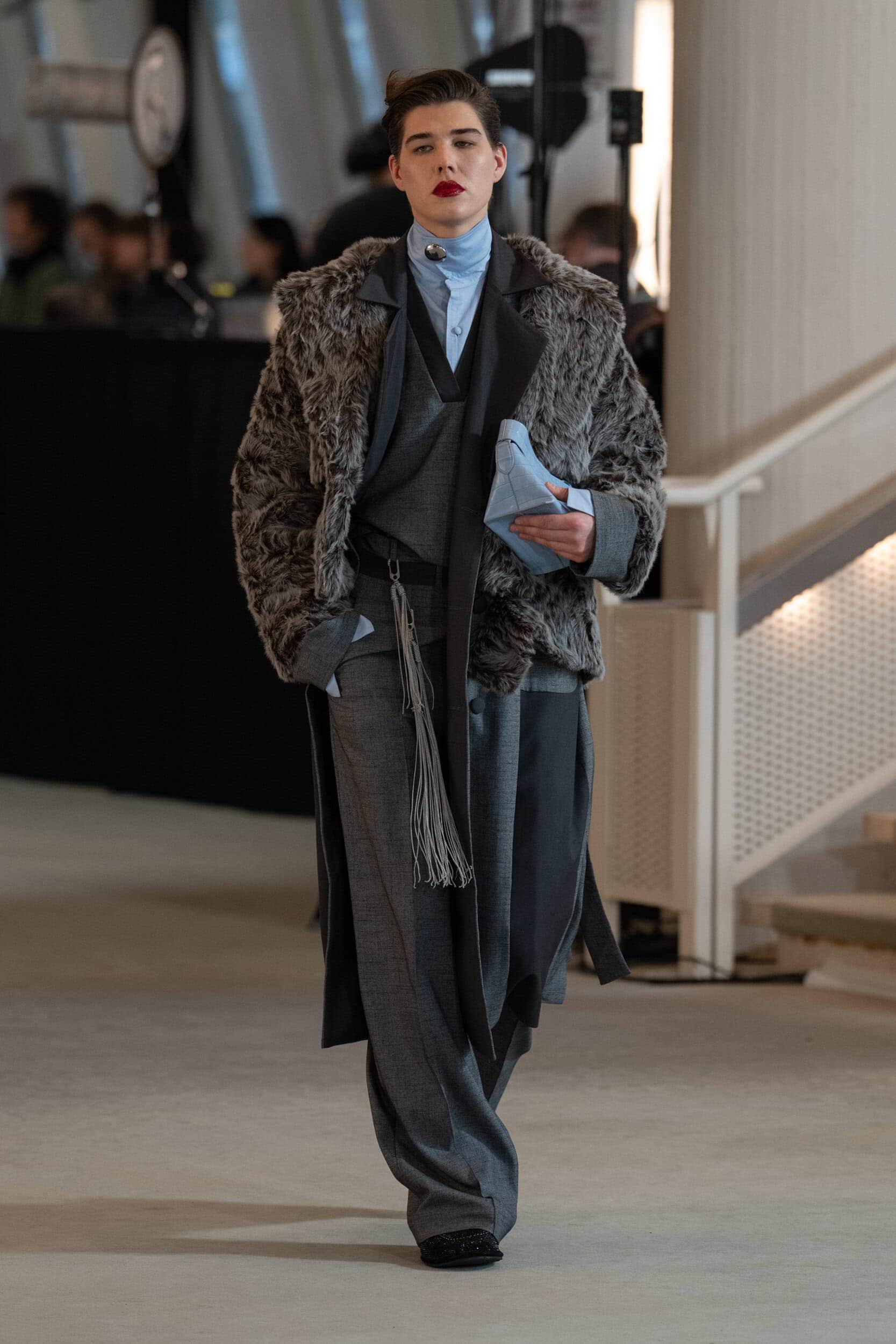
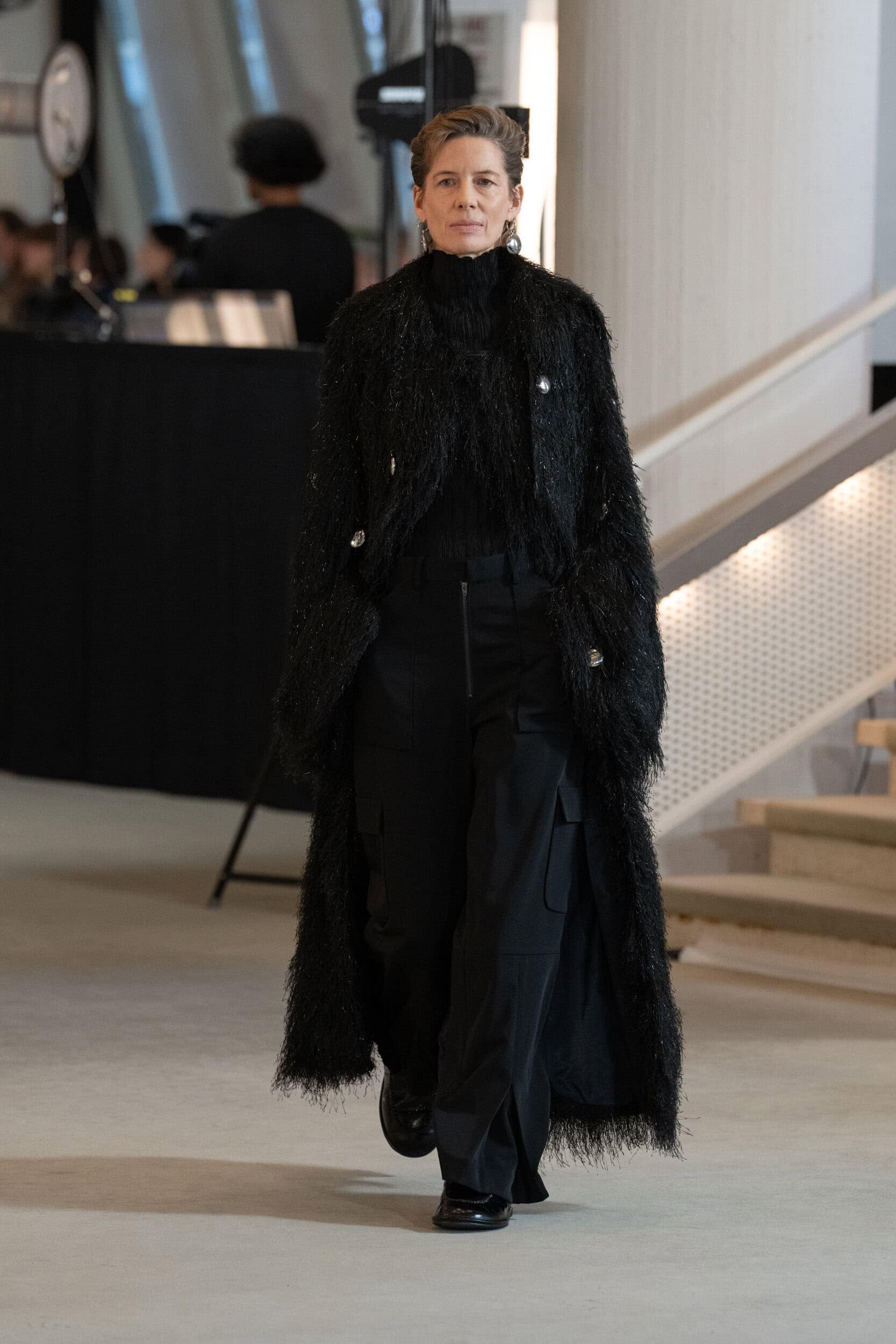
PALMWINE IceCREAM’s electrifying debut was giving London fashion scene meets the vibrant markets of Accra, and we’re here for it. The warm color palette of rich browns, burnt oranges, deep burgundy, and earthy greens evoke the colors of founder Kusi Kubi’s native Ghana, not to mention materials such as wood, raffia, and calabash. Inspired by and sourcing from the Kantamanto Secondhand Market in Accra, the leathers are then hand-dyed. While living in London, he also draws from his family’s Ashanti heritage and uses traditional techniques. The collection was fire and the energy was lit – set in the pulsating hall at the world renowned club Berghain, the finale fittingly blasted Beyonce’s Apeshit, because that was the audience’s reaction. The first African brand to be featured in Berlin Contemporary, we can’t wait to see more from PALMWINE IceCREAM.
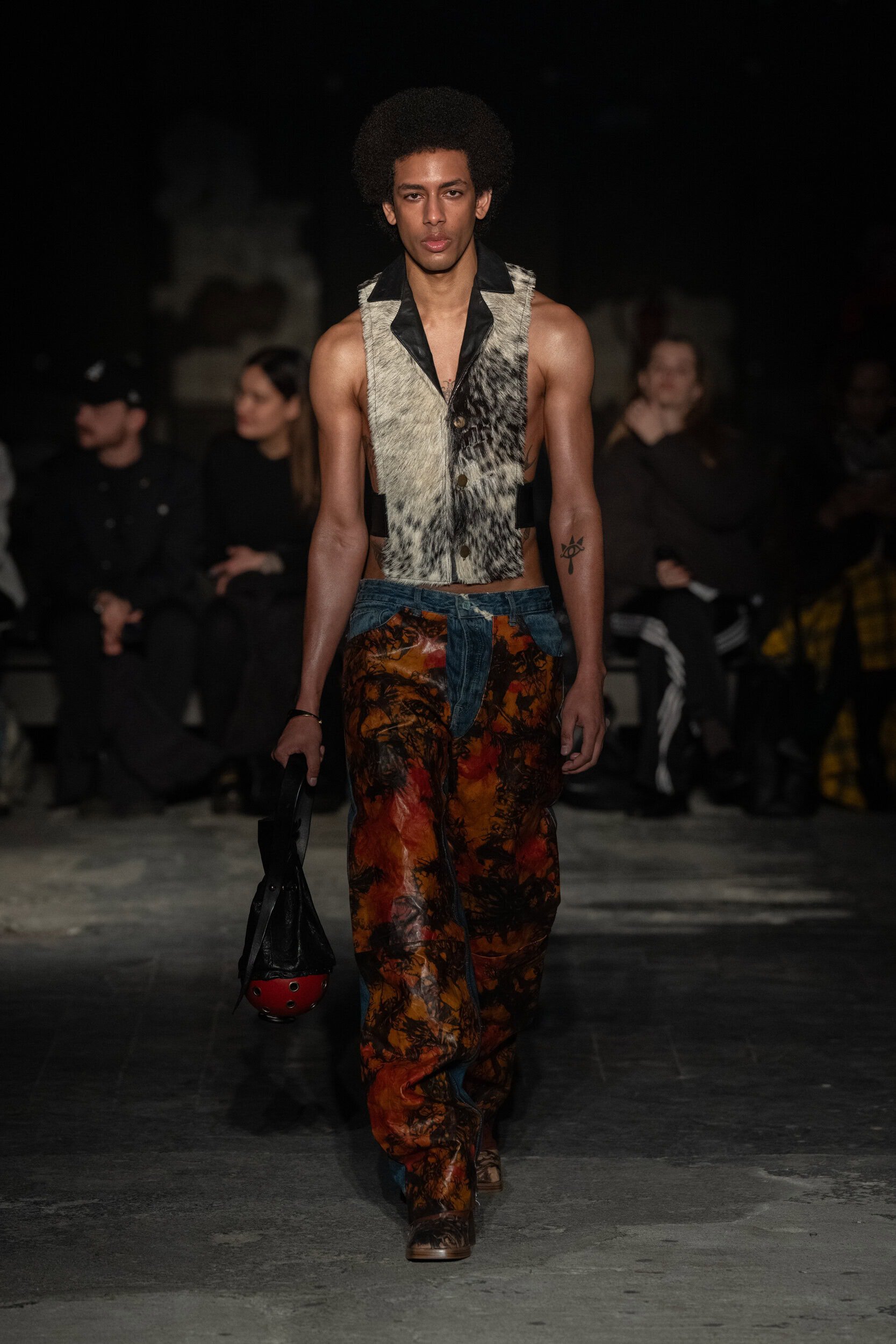
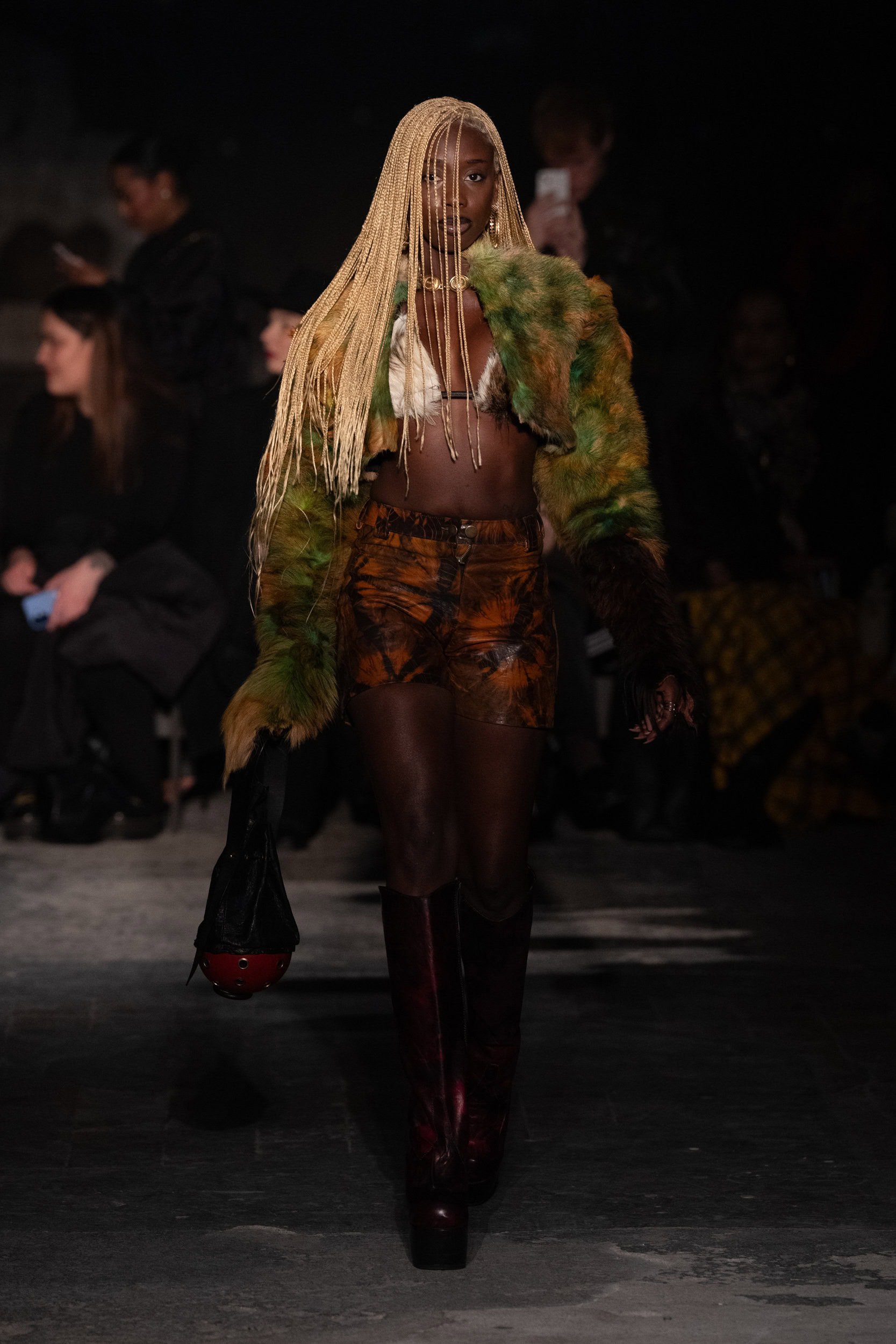
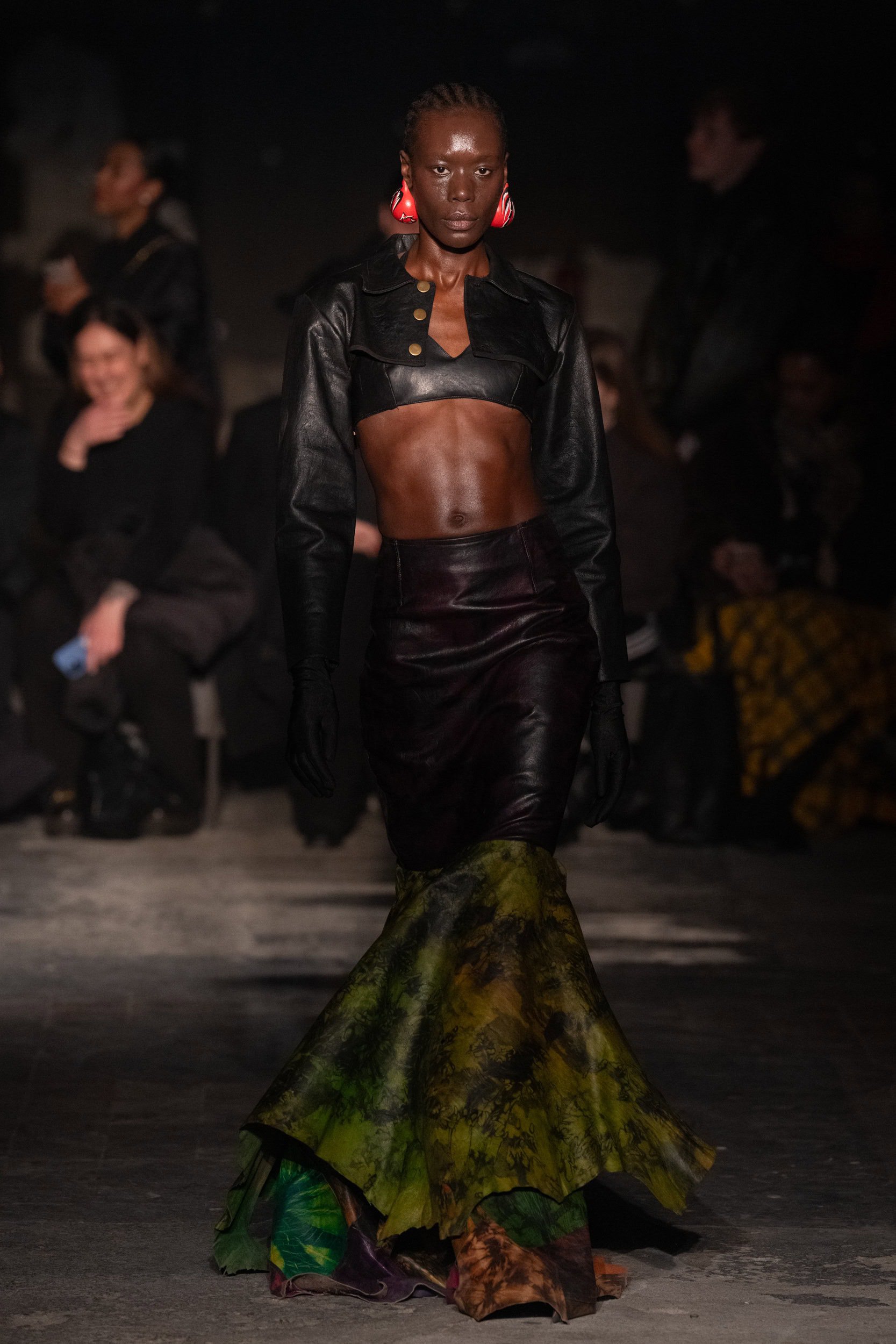
Sorely missed was absolute crowd favorite Namilia, but they apparently were overwhelmed with collaborations and commissions and decided to sit out this season (give them a break, they did outfit Charli XCX and Troye Sivan for the Sweat tour). Which some brands on the BFW calendar have done time and again, and I think it’s great in the face of our too fast-paced calendar pushing constant content and overconsumption. Some of that is dictated by the slow-fashion, time-consuming artisanal processes and produce-on-demand approaches, not to mention a more sustainable mindset ideologically opposed to overproduction. Creativity takes time and down time. It is altogether a more healthy way to work for small teams that prioritize wellbeing.
Fortunately, we did get a chance to see Namilia’s Playboy collab at the Gemäldegalerie for the Berliner Salon, which celebrated its 10-year anniversary with an exhibit of 55 up-and-coming designers in the context of a museum housing Old Masters’ paintings from the 13th- 18th century. As Christiane Arp, who curated it, put it: “Where Old Masters meet young talents, because the big themes of art history are the big themes of fashion history.” It is an opportunity to showcase remarkable work that might not fit in the format of a runway show or students who don’t have a brand yet. And further illustrates the rich interactions and cross pollination of the arts in Berlin.
In a city of diversity like Berlin and the challenging times in our world, recurring themes this season are the push and pull between strength and fragility, conflict and resilience, old and new, individuality and community, challenging norms and expressing identity. Freedom of expression, the vibrant cultural scene, and notorious nightlife is what makes the cultural hub that is Berlin and the creative hotpot that is Berlin Fashion Week. As celebrities and their stylists clearly already know: BFW is cooking!
